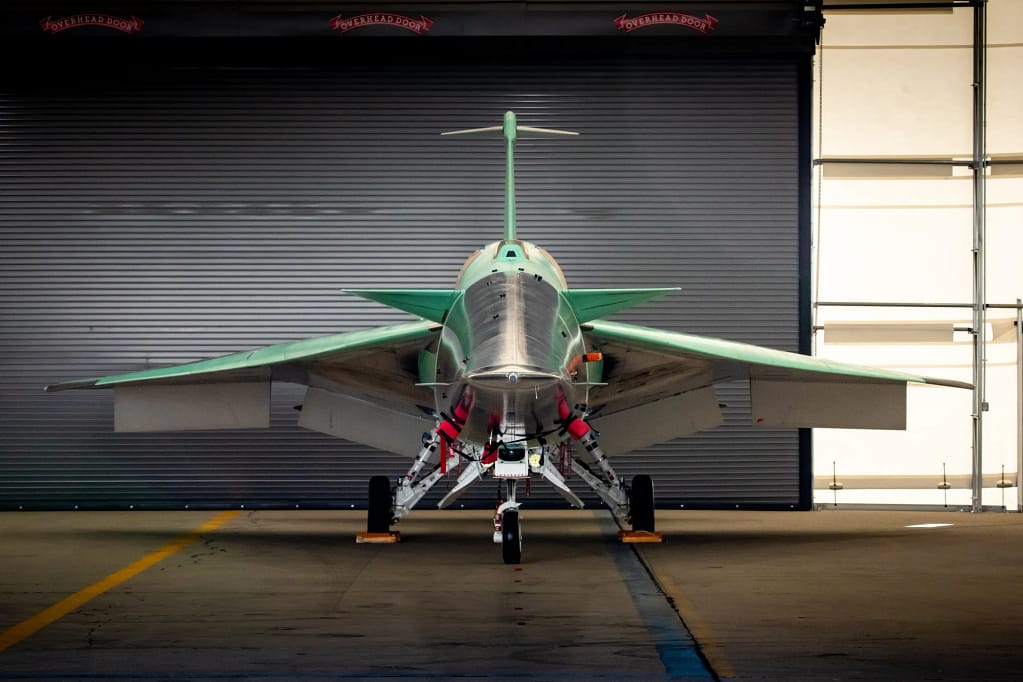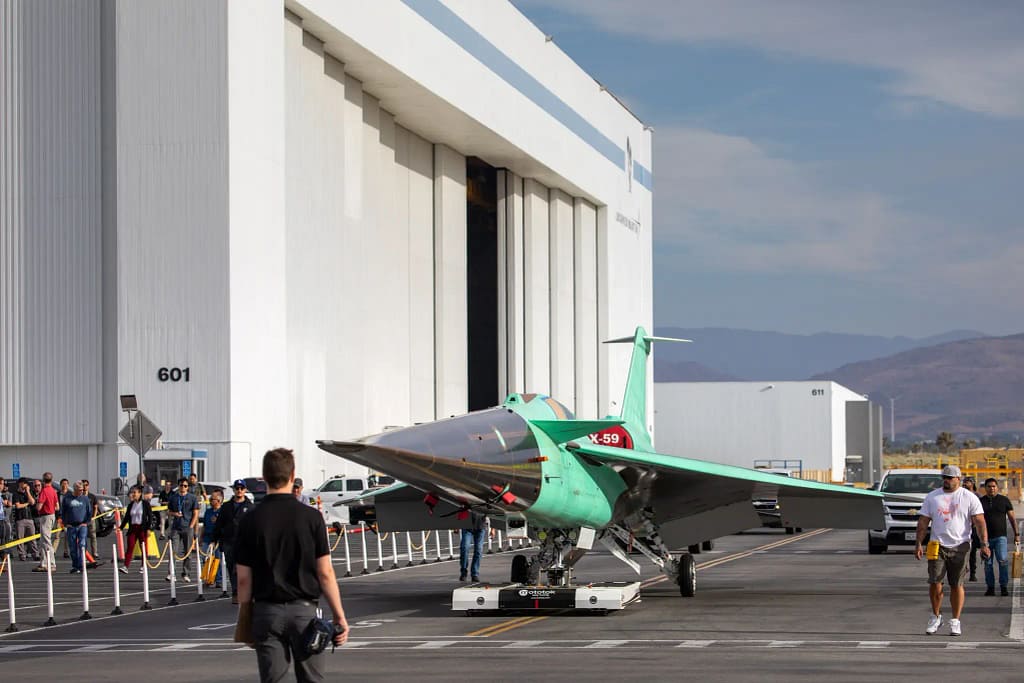In a world where time is money, the need for faster and more efficient air travel has always been a driving force in aviation innovation. For decades, there has been an unofficial speed limit for commercial airliners, roughly capping speeds at around 600 miles per hour. This limitation is primarily due to concerns about noise, especially sonic booms, and the associated increase in fuel consumption. However, NASA is set to challenge these restrictions with the X-59, an unconventional aircraft designed to be as quiet as possible while flying at supersonic speeds. This groundbreaking project, officially known as the Quiet Supersonic Technology Demonstrator, or Quest, holds the promise of not only revolutionizing commercial air travel but also offering unique military applications.
In aviation, speed translates to efficiency, and greater speed provides more options in case of unexpected circumstances. For decades, airlines have been operating with a speed limit, and a typical flight from New York to London takes around six and a half hours, a duration that has remained largely unchanged for over 50 years. This self-imposed speed limit is rooted in the trade-off between efficiency and noise.
Airlines have long sought to exceed this speed limit, as demonstrated by the iconic Concorde, a supersonic airliner that could reach speeds of over 1,300 miles per hour. However, the Concorde’s sonic boom generated significant noise, leading to restrictions on supersonic travel over populated areas. While the technology allowed for incredible speeds, the economics and acoustics didn’t support widespread commercial supersonic travel.
One of the major barriers to supersonic travel is the sonic boom, a loud shock wave created when an aircraft travels faster than the speed of sound. Sonic booms can be disruptive and disturbing to people on the ground. Many countries, including the United States, have banned overland sonic booms for civilian aircraft. To make supersonic travel viable, NASA set out to solve the noise problem, and the X-59 Quest was born.
To appreciate the significance of the X-59’s mission, it’s essential to understand how sonic booms are generated. As an aircraft moves through the air, it continuously creates pressure waves that emanate from the airplane, traveling at the speed of sound, approximately 678 miles per hour at 30,000 feet. When an aircraft goes supersonic, these pressure waves pile up ahead of the airplane and compress, forming shock waves.
These shock waves create a sudden change in pressure, producing the characteristic loud boom or crack of a sonic boom. The Concorde, while capable of Mach 2 speeds, generated sonic booms that restricted its supersonic travel to over the ocean. The X-59 aims to understand how to make these sonic booms quieter or virtually unnoticeable to those on the ground.
The X-59 A Unique Solution
NASA’s X-59 Quest represents a unique approach to quieting sonic booms. The aircraft’s long and slender design plays a crucial role in shaping the volume and lift distribution, which spreads out the buildup of shock waves, preventing them from coalescing into strong front or rear shocks, the primary causes of loud sonic booms. Furthermore, the X-59 is designed to fly at higher altitudes, approximately 55,000 feet, compared to the 30,000-40,000 feet at which most airliners currently operate. This increased distance from the ground further reduces the noise heard from the sonic boom.
The X-59 is powered by a modified General Electric F414 GE 100 engine, similar to engines used in the Navy Super Hornet, providing it with the capability to fly at speeds of Mach 1.4, or just above 1,000 miles per hour. While it will fly at supersonic speeds, the X-59’s most remarkable achievement is in reducing the perceived loudness of its sonic boom. The X-59’s sonic boom is estimated to have a Perceived Loudness (PL) value of 75, equivalent to the sound of a car door being slammed across the street.
Potential for Commercial Supersonic Travel
The successful development of the X-59 has the potential to revolutionize commercial supersonic travel. By minimizing the noise generated by sonic booms, the X-59 opens up possibilities for supersonic overland travel that were once inconceivable. Flights from New York to Los Angeles, which currently take about six hours, could potentially be completed in less than three hours. This incredible speed could transform international and cross-country business, enabling quicker transactions, faster deliveries, and a significant boost in global productivity.
While addressing the noise problem appears to be on the horizon, the efficiency problem remains a challenge. Aircraft flying at Mach 3 or even Mach 2.2 would consume large amounts of fuel. However, as more supersonic aircraft are built and carry passengers, the economies of scale could help reduce costs, making supersonic commercial travel more affordable.

The Potential for Military Applications
Beyond commercial aviation, the X-59 Quest may have significant implications for military operations. In the world of military aircraft design, stealth has been a focal point, aiming to reduce radar cross signatures (RCS) and manage thermal signatures. Reducing sound, as demonstrated by the X-59, could also be a critical aspect of stealth, especially in a contested environment.
In modern military aviation, remaining undetected is a priority, and an aircraft’s ability to minimize its sonic boom could be a game-changer. A quiet, unseen aircraft that can strike targets before being detected could offer a significant strategic advantage.
As the X-59 project continues to progress, there will likely be further milestones and breakthroughs to discuss, including regulatory developments allowing supersonic flight over land and the introduction of commercial offerings from aviation companies. This represents a compelling narrative in the ever-evolving world of aviation, and the X-59 Quest is a significant chapter in this story. The exciting journey of aviation’s evolution is far from over, and the X-59 promises to be a pivotal player in its next phase.




